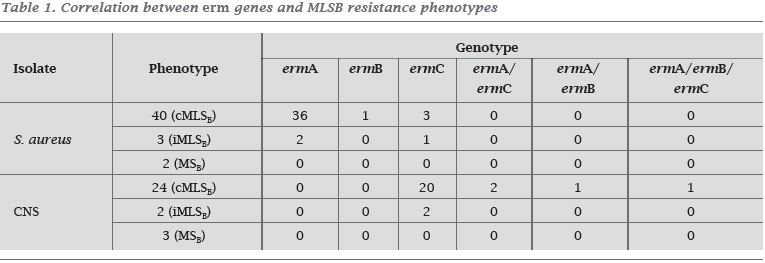INTRODUCTION: Resistance to macrolides, lincosamides and streptogramins B (MLS B antibiotics) in staphylococci may be due to modification in ribosomal target methylase encoded by erm genes. The expression of MLS B resistance lead to three phenotypes, namely constitutive resistance (cMLS B), inducible resistance (iMLS B), and resistance only to macrolides and streptogramins B (MS B). The iMLS B resistance is the most difficult to detect in the clinical laboratory. OBJECTIVE: This study investigated the expression of MLS B resistance and the prevalence of the erm genes among 152 clinical isolates of Staphylococcus aureus and coagulase-negative Staphylococcus (CNS) from Hospital de Clínicas de Porto Alegre. METHODS: Primary MLS B resistance was detected by the disk diffusion method. Isolates with iMLS B phenotype were tested by double-disk induction method. All isolates were tested by a genotypic assay, PCR with specific primers. RESULTS: A total of 46.7% of staphylococci were positive for cMLS B; 3.3% for iMLS B and 3.3% for MS B. One or more erm genes were present in 50.1% of isolates. The gene ermA was detected in 49 isolates, ermC in 29 and ermB in 3. CONCLUSION: The prevalence of the ermA, ermB and ermC genes were 29.6%, 17.1% and 0.66% respectively, and constitutive resistance was the most frequent as compared to the other two phenotypes.
Staphylococcus; resistance; erm genes; macrolides




